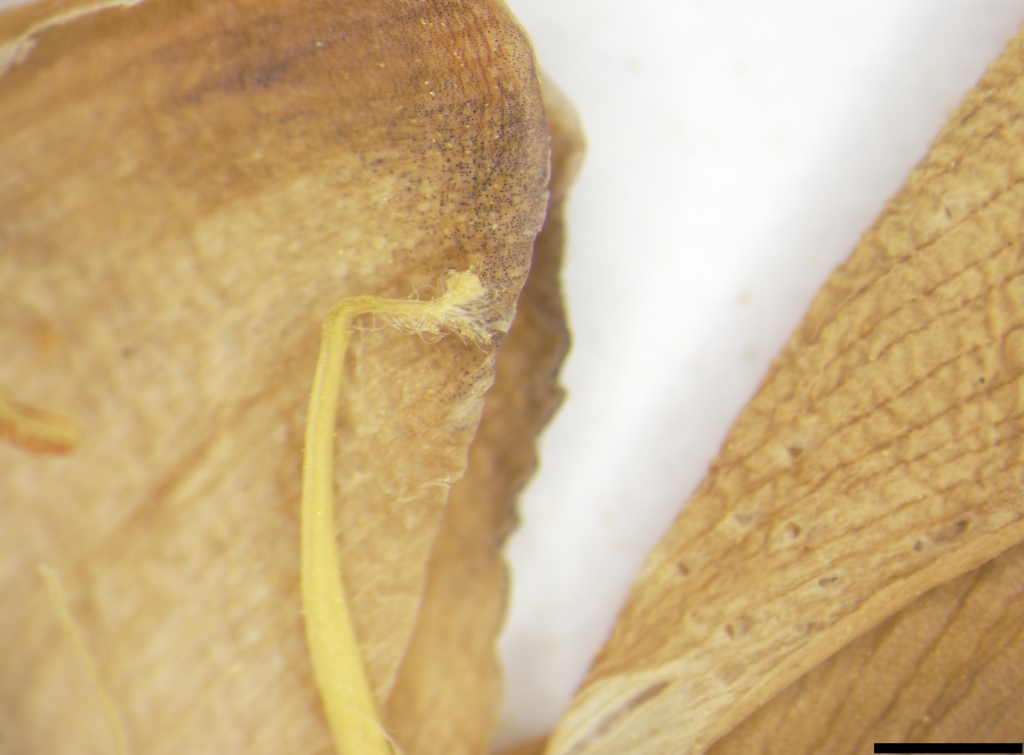Swainsona sericea
(A.T.Lee) J.M.Black ex H.Eichler Silky Swainson-peaProstrate or ascending perennial herb, to c. 20 cm tall; stems pubescent with appressed or spreading asymmetrically medifixed hairs; hairs 0.5–1 mm long. Leaves mostly 2–7 cm long; leaflets 5–13, narrow-oblanceolate to narrow-elliptic, lateral leaflets 5–15 mm long, usually 1–3 mm wide, terminal leaflet usually 2–5 mm longer, apices acute, rarely obtuse or retuse, both surfaces pubescent; stipules 3–7 mm long. Racemes mostly 2–8-flowered; flowers 7–11 mm long; calyx pubescent, teeth about equal to tube; petals purplish; standard 8–14 mm long, 8–14 mm wide, broad-ovate, long-clawed; keel 7–10 mm long, apices obtuse with swellings behind tip; style tip geniculate. Pod cylindric to obovoid, mostly 10–17 mm long, 4–8 mm wide, pubescent, stipe to c. 4 mm long; seeds c. 20, cordate, c. 1.7 mm long, olive-green to brown. Flowers Aug.–Oct.
LoM, MuM, Wim, VRiv, MSB, RobP, MuF, Gold, NIS. Also SA, NSW, ACT. Rare in Victoria, of disjunct occurrence in north of the State where usually found in grassland and grassy woodland.
The distinction between this species and S. phacoides is at times slight, with overlap in most characters used in various keys (i.e. both species often have flowers c. 10-11 mm long etc.). The only reliable character to distinguish such specimens is by inspection of the style tip, which is characteristically bent in S. sericea.
Jeanes, J.A. (1996). Fabaceae. In: Walsh, N.G.; Entwisle, T.J., Flora of Victoria Vol. 3, Dicotyledons Winteraceae to Myrtaceae, pp. 663–829. Inkata Press, Melbourne.
 Spinning
Spinning

